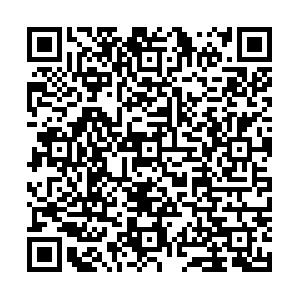|
[1]
|
Timins JK, Lipoti JA. Radiological terrorism[J]. N J Med, 2003, 100(6):14-21. |
|
[2]
|
Lowe AS, Walker MD, Cowan R, et al. Therapeutic ultrasound and wound closure:lack of healing effect on x-ray irradiated wounds in murine skin[J]. Arch Phys Med Rehabil, 2001, 82(11):1507-1511. |
|
[3]
|
Kumar P, Jagetia GC. Modulation of wound healing in Swiss albino mice by different doses of gamma radiation[J]. Burns, 1995, 21(3):163-165. |
|
[4]
|
程天民,冉新泽.合并放射损伤的创伤难愈与促愈研究的进展与思考[J].中华放射医学与防护杂志,2002,22(3):145-148.
|
|
[5]
|
Carnevali S, Mio T, Adachi Y, et al. Gamma radiation inhibits fibroblast-mediated collagen gel retraction[J]. Tissue Cell, 2003,35(6):459-469. |
|
[6]
|
Keller PF, Verin V, Ziegler T, et al. Ganurm-irradiation markedly inhibits the hydrated collagen gel contradiction by arterial smooth muscle cells[J]. J Investig Med, 2001, 49(3):258-264. |
|
[7]
|
Braunhut SJ, Medeiros D, Lai L, et al. Tempol prevents impairment of the endothelial cell wound healing response caused by ionising radiation[J]. Br J Cancer Suppl, 1996, 27:S157-S160. |
|
[8]
|
Qu J, Cheng T, Shi C, et al. A study on the activity of fibroblast cells in connection with tissue recovery in the wounds of skin injury after whole-body irradiation[J]. J Radiat Res, 2004, 45(2):341-344. |
|
[9]
|
Qu j, Cheng T, Shi C, et al. Reduced presence of tissue-repairing cells in wounds combined with whole-body irradiation injury is associated with both suppression of proliferation and increased apoptosis[J]. Med Sci Monit, 2003, 9(10):BR370-BR377. |
|
[10]
|
Chen YJ, Dai YS, Chen BF, et al. The effect of tetrandrine and extracts of centella asiatica on acute radiation dermatitis in rats[J].Biol Pharm Bull, 1999, 22(7):703-706. |
|
[11]
|
Jagetia GC, Rajanikant GK, Baliga MS, et al. Augmentation of wound healing by ascorbic acid treatment in mice exposed to gaauna-radiation[J]. Int J Radiat Biol, 2004, 80(5):347-354. |
|
[12]
|
Jagetia GC, Rajanikant GK. Role of curcumin, a naturally occurring phenolic compound of turmeric in accelerating the repair of excision wound, in mice whole-body exposed to various doses of gamma-radiation[J]. J Surg Res, 2004, 120(1):127-138. |
|
[13]
|
Jagetia GC, Rajanikant GK. Effect of curcumin on radiationimpaired healing of excisional wounds in mice[J]. J Wound Care, 2004, 13(3):107-109. |
|
[14]
|
Shi CM, Qu JF, Cheng TM. Effects of the nerve growth factor on the survival and wound healing in mice with combined radiation and wound injury[J]. J Radiat Res, 2003, 44(3):223-228. |
|
[15]
|
Eming SA, Whitsitt JS, He L, et al. Particle-mediated gene transfer of PDGF isoforms promotes wound repair[J]. J Invest Dermatol, 1999,112(3):297-302. |
|
[16]
|
Mustoe TA, Purdy J, Gramates P, et al. Reversal of impaired wound healing in irradiated rats by platelet-derived growth factor-BB[J].Am J Surg, 1989, 158(4):345-350. |
|
[17]
|
Wheeless CR, Zanagnolo V, Bowers D, et al. The effect of growth hormone on the bursting strength of ileal anastomotic segments in radiation-injured rat bowel[J]. Gynecol Oncol, 1998, 70(1):121-122. |
|
[18]
|
Breitbart AS, Mason JM, Urmacher C, et al. Gene-enhanced tissue engineering:applications for wound healing using cultureddermal fibroblasts transduced retrovirally with the PDGF-B gene[J].Ann Plast Surg, 1999, 43(6):632-639. |
|
[19]
|
Dantzer D, Ferguson P, Hill R_P, et al. Effect of radiation and cell implantation on wound healing in a rat model[J]. J Surg Oncol, 2003,83(3):185-190. |
|
[20]
|
Shi C, Cheng T, Su Y, et al. Transplantation of dermal multipotent cells promotes survival and wound healing in rats with combined radiation and wound injury[J]. Radiat Res, 2004, 162(1):56-63. |

 点击查看大图
点击查看大图




 下载:
下载: